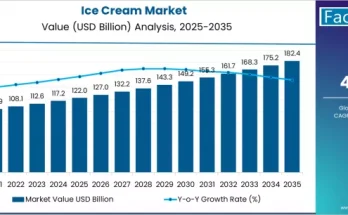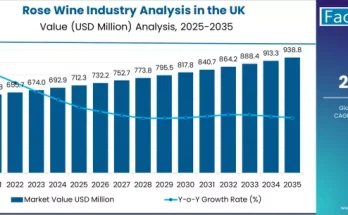The Middle East and Africa (MEA) soya flour industry has been steadily growing, driven by rising demand for protein-rich food ingredients and cost-effective animal feed solutions. Soya flour, derived from ground soybeans, is widely recognized for its high protein content and versatility in both human consumption and livestock nutrition. In the MEA, the industry is witnessing gradual expansion due to increasing food processing applications, livestock feed requirements, and industrial utilization.
Market Overview
Soya flour in the MEA is primarily categorized into defatted and full-fat types. Defatted soya flour leads the market, representing a significant share of demand. Its dominance is due to its higher protein concentration, nutritional efficacy, and cost-efficiency, making it suitable for both animal feed and industrial processing. Full-fat soya flour, though less prevalent, is used in specialized food applications and value-added products.
The industry is also segmented by application. Animal feed remains the largest segment, reflecting the growing livestock, poultry, and aquaculture sectors across the region. Bakery and extruded foods, including bread, biscuits, and snack items, are emerging as significant consumers of soya flour due to its nutritional benefits and protein fortification properties. Industrial applications, including adhesives and protein isolate production, are also contributing to market growth.
Regional Insights
Key markets driving the MEA soya flour industry include South Africa, Egypt, and Saudi Arabia. South Africa holds a leading position due to its well-established livestock and aquaculture infrastructure. Egypt and Saudi Arabia are witnessing growing adoption driven by food processing demands and government initiatives to ensure food security. Other countries, including the UAE, Turkey, and Kuwait, are gradually increasing their utilization of soya flour in both feed and food sectors.
Key Trends & Drivers
Several trends are shaping the MEA soya flour industry:
- Rising Animal Protein Demand:Expanding poultry, livestock, and aquaculture operations require high-quality protein sources, positioning soya flour as a preferred ingredient for feed formulation.
- Food Processing Expansion:Soya flour is increasingly incorporated into baked goods and other processed foods to enhance nutritional profiles and offer cost-effective protein fortification.
- Sustainable Protein Focus:There is growing emphasis on plant-based proteins as sustainable alternatives to traditional animal protein, creating opportunities for soya flour adoption in human nutrition.
- Industrial Applications Growth:Soya flour is being utilized in industrial applications such as adhesives, bioplastics, and protein isolate production, reflecting the diversification of end-use segments.
Market Dynamics
The MEA soya flour market is supported by increasing investments in modern agricultural practices and animal nutrition solutions. Feed manufacturers and food processors are integrating soya flour into their production systems to ensure consistent protein quality, nutritional adequacy, and cost optimization. Government-led initiatives promoting food security and protein nutrition further support the adoption of soya flour products.
The industry also benefits from the price competitiveness of soy-based ingredients compared to other protein sources. This economic advantage, combined with the high nutritional value of soya protein as a complete and high-quality protein, strengthens its role in both food and feed applications.
Challenges and Opportunities
While the industry is growing steadily, challenges include supply chain constraints, quality standardization, and fluctuating raw material prices. However, opportunities abound in the development of specialized soya flour grades tailored for specific applications, including bakery fortification, aquaculture feed, and industrial protein extraction.
The substitution of wheat flour with soya flour in mass-market baked goods is emerging as a cost-effective approach to meet protein requirements. Innovations in processing technology and functional ingredient development are enabling manufacturers to offer products with enhanced protein concentration, digestibility, and application versatility.
Key Players and Competitive Landscape
Leading companies operating in the MEA soya flour market include global and regional players such as Archer-Daniels-Midland Company, Cargill, Bunge Limited, Wilmar International, Louis Dreyfus Company, Al Ghurair Resources, and Savola Group. These companies are focusing on expanding production capacities, improving supply chain efficiency, and offering high-quality, standardized soya flour products to meet diverse regional demands.
Conclusion
The MEA soya flour industry is poised for steady growth over the next decade, supported by rising protein demand, expanding food processing applications, and increasing industrial use. Defatted soya flour will continue to dominate the market, while animal feed remains the key application segment. The region’s strategic focus on food security, sustainable protein sources, and nutritional optimization will further drive market development. Companies investing in quality, innovation, and supply chain reliability are well-positioned to capitalize on the growing opportunities in the MEA soya flour industry.
Browse Full Report – https://www.factmr.com/report/middle-east-and-africa-soya-flour-industry-analysis



